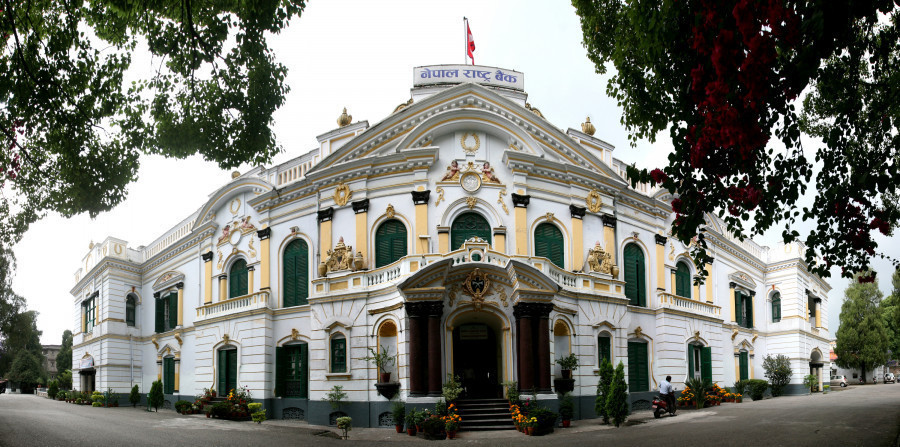Columns
A coherent policy moment, but will it deliver?
The problem lies with frequent policy reversals, tax disputes and ambiguous investment rules.
Shrijya Kafle
Nepal’s economic fundamentals reflect a more stable and coordinated outlook compared to the previous years. Inflation remains moderate, averaging around 4.24 percent. At the same time, foreign exchange reserves are sufficient to cover imports for 14.7 months and the country has a surplus in its balance of payments accounts of Rs. 491.44 billion. Remittance inflows are substantial, exceeding Rs. 1532.9 billion and there is more than enough liquidity in the financial system. At first glance, the conditions for economic recovery seem well-established.
But that’s just the tip of the iceberg. These headline figures conceal a more sobering reality: Private sector investment is sluggish, credit growth is weak and job creation remains limited. The real economy continues to underperform, revealing a deeper disconnection between policy intent and on-the-ground outcomes. Confidence, not liquidity, has become the binding constraint, and without meaningful execution, even the best policies risk falling flat.
Harmonising fiscal and monetary policies is crucial for revitalising the long-lost momentum in the real economy. Perhaps this is the first time in the recent budget periods that Nepal's fiscal and monetary policies appear to be synchronised in their intent to revive real economic growth.
One of the key features is the bank rate, which has been reduced from 6.5 percent to six percent, the deposit collection rate from three percent to 2.75 percent and the policy rate from five percent to 4.5 percent. These reductions mean that the cost of borrowing would be lowered, thereby encouraging both individuals and businesses to take loans for consumption and investment.
At the same time, by lowering the interest rate paid to banks on excess reserves held with the central bank, Nepal Rastra Bank (NRB) is discouraging hoarding of liquidity and inducing financial institutions to inject funds into the economy through increased lending. In turn, commercial bank deposit interest rates can be lowered by approximately 0.25 percentage points, which could slightly reduce savers' returns. However, this action is likely to boost overall liquidity in the market and stimulate economic activities by increasing credit flows in all directions.
The new monetary policy for the Fiscal Year (FY) 2025/26 has a strategic approach to increase the lending ceiling for buying and construction of residential homes from Rs 20 million to Rs 30 million and increase the loan-to-value (LTV) ratio to 80 percent for families buying their homes for the first time. For others, it raises it to 70 percent.
By extending more credit to families, the policy aims to unlock the investment potential in housing, an industry that has an immediate multiplier effect on the economy. Increased construction activity not only benefits property developers and contractors; it also boosts demand in different sectors such as cement, steel, hardware, paints, furniture transport. By injecting money into local economies, it generates both skilled and unskilled high-scale job opportunities.
During a period of relatively less credit growth and sluggish market momentum, housing finance becomes the central strategic tool to stimulate economic activity and enhance jobs. However, this promising move also calls for careful regulatory oversight to ensure that it does not lead to speculative booms or housing market overheating, particularly in heavy-demand markets like the Kathmandu Valley.
The policy aims not only to stabilise, but to democratise access to credit, making formal finance a right, not a privilege. Incorporating loans of up to Rs 300,000 for men and Rs 500,000 for women under the deprived sector lending is a giant step towards financial inclusion and in reducing reliance on informal lending avenues such as traditional moneylenders.
As the repayment of such loans is collateralised with future foreign earnings, default risk is low and therefore it is a sustainable form of credit. Lastly, by moving migrant households out of costly moneylenders and into formal banking, the policy also enhances financial security and protects vulnerable borrowers.
The revision of working capital loan guidelines to better resonate with the nature of enterprises such as agriculture, cottage industries, education, health, sport and media is a very timely and market-oriented move by NRB. Small and medium-sized enterprises (SMEs) and entrepreneurs have long complained that their seasonal or irregular cash flow patterns are incompatible with strict loan repayment terms. Such blanket requirements tend to push viable businesses into technical defaults, not because they lack the ability to repay, but because of the mismatch in the cash flow timing and schedule of repayments. By ensuring that loan tenures align with real business conditions, the policy introduces desirable flexibility in repayment to the benefit of lenders and borrowers.
The government's effort to establish 'Neo Banks' indicates a recognition of the emerging cashless economy. This initiative aims to provide low-cost and easily accessible financial services for both rural and urban areas of Nepal. Additionally, the implementation of national ID-linked electronic verification for Know Your Customer (KYC) procedures promises to minimise administrative challenges and enable quicker access to banking services.
That said, coordination on paper does not necessarily guarantee economic impact. The historical underutilisation of capital expenditure, often below 60 percent remains a persistent concern. If public investment fails to deliver on time, the private sector’s response to expansionary policy will remain stagnant despite cheaper credit. Moreover, overlapping eligibility criteria, bureaucratic delays in releasing concessional loans and a lack of a monitoring framework may cause policy failure. Without proper implementation, fiscal and monetary policy transmission will be hampered by institutional inertia.
Even though liquidity is abundant and macroeconomic indicators paint a picture of stability, the real drivers of growth, like private investment, job creation and innovation, remain subdued. A key reason behind this stagnation is the persistent lack of investor confidence. Investor confidence is not just about interest rates or tax relief. It is about predictability and profitability. The economy can regain confidence when investors align their expectations with clear and consistent national rules. In Nepal, the problem lies with frequent policy reversals, tax disputes and ambiguous investment rules. To break this chain, reforms must go beyond monetary tools and tackle deeper structural and governance-related issues.
Nepal's policy framework for FY 2082/83, nevertheless, shows a welcome shift towards proactive macroeconomic management. The monetary policy has embraced the expansionary policy, while the fiscal policy has signalled a willingness to spend. Together, these policies have the potential to restore growth, provided they are delivered with discipline, urgency and precision. If Nepal aligns its policy vision with ground realities, it may finally overcome the stagnation the economy has faced, despite having otherwise favourable macroeconomic fundamentals.




 19.12°C Kathmandu
19.12°C Kathmandu















